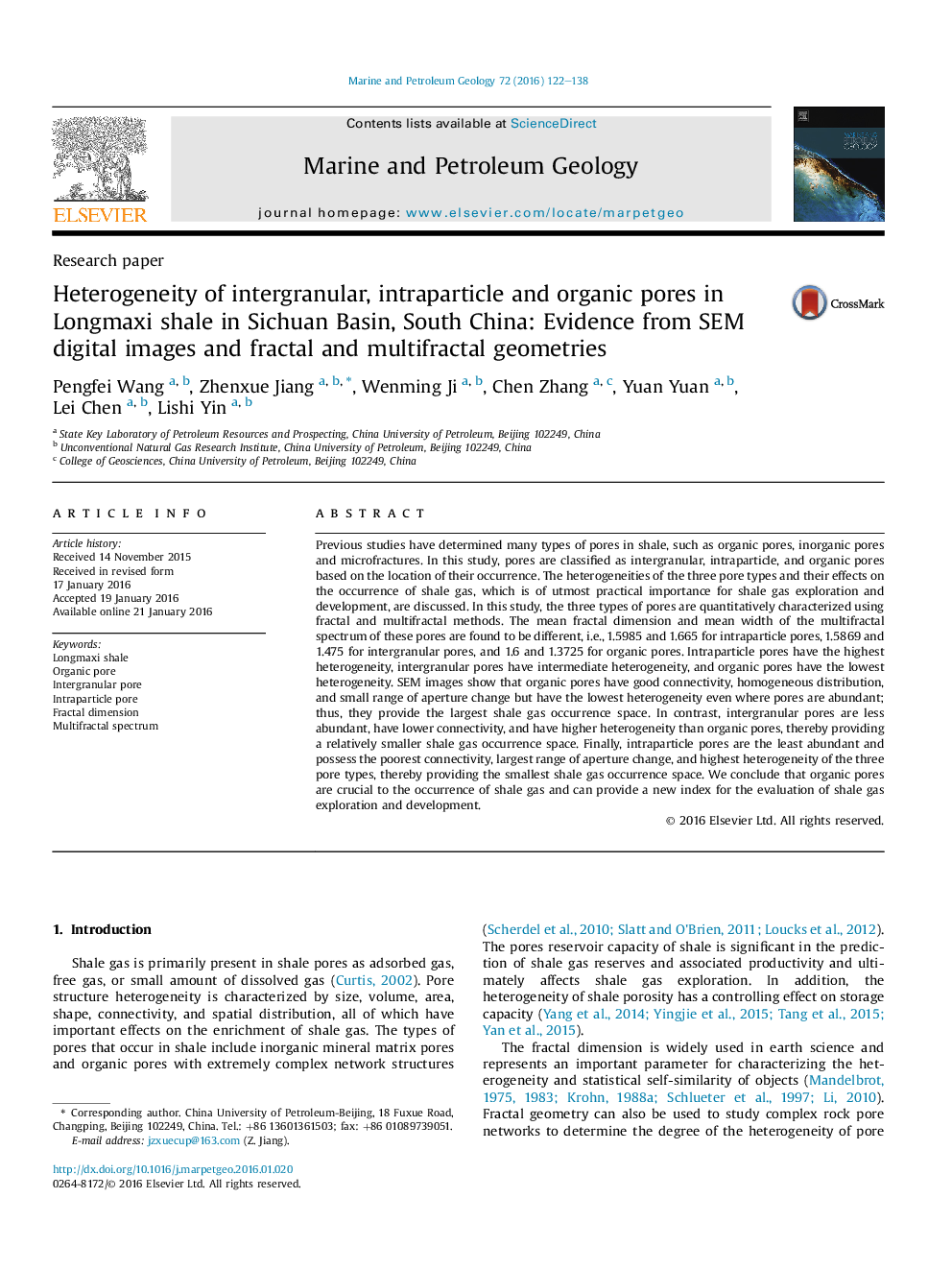| Article ID | Journal | Published Year | Pages | File Type |
|---|---|---|---|---|
| 6434481 | Marine and Petroleum Geology | 2016 | 17 Pages |
â¢Fractal dimension and multifractal spectrum are used for quantitative characterization of heterogeneity and pores capacity of different pore types in shale.â¢Pores are classified as intergranular, intraparticle and organic pores on the basis of their position relative to mineral grains and organic matter.â¢Heterogeneity is the highest for intraparticle pores, intermediate for intergranular pores, and the lowest for organic pores.â¢Organic pores have the lowest heterogeneity even where pores are abundant, and thus, provide the largest occurrence space for shale gas.
Previous studies have determined many types of pores in shale, such as organic pores, inorganic pores and microfractures. In this study, pores are classified as intergranular, intraparticle, and organic pores based on the location of their occurrence. The heterogeneities of the three pore types and their effects on the occurrence of shale gas, which is of utmost practical importance for shale gas exploration and development, are discussed. In this study, the three types of pores are quantitatively characterized using fractal and multifractal methods. The mean fractal dimension and mean width of the multifractal spectrum of these pores are found to be different, i.e., 1.5985 and 1.665 for intraparticle pores, 1.5869 and 1.475 for intergranular pores, and 1.6 and 1.3725 for organic pores. Intraparticle pores have the highest heterogeneity, intergranular pores have intermediate heterogeneity, and organic pores have the lowest heterogeneity. SEM images show that organic pores have good connectivity, homogeneous distribution, and small range of aperture change but have the lowest heterogeneity even where pores are abundant; thus, they provide the largest shale gas occurrence space. In contrast, intergranular pores are less abundant, have lower connectivity, and have higher heterogeneity than organic pores, thereby providing a relatively smaller shale gas occurrence space. Finally, intraparticle pores are the least abundant and possess the poorest connectivity, largest range of aperture change, and highest heterogeneity of the three pore types, thereby providing the smallest shale gas occurrence space. We conclude that organic pores are crucial to the occurrence of shale gas and can provide a new index for the evaluation of shale gas exploration and development.
